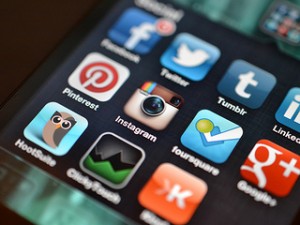![]() New research from Yahoo! about Twitter tells us a bit more about the evolution of Twitter usage and confirms some facts we already knew.
New research from Yahoo! about Twitter tells us a bit more about the evolution of Twitter usage and confirms some facts we already knew.
It’s not a surprise that a small number of Twitter users are responsible for the most consumed tweets. The Yahoo! study, “Who Says What to Whom on Twitter,” reports that 0.05% of Twitter users account for nearly 50% of all attention (meaning that almost half of the tweets that are published and actually read are published by just 0.05% of Twitter users). These power Twitter users are dubbed “elite users” and include primarily celebrities, people from the media, organizations, and bloggers.
One of the most interesting findings in the study reveals the trend in fragmenting the Twitter audience. In fact, Twitter use is reported to have “fragmented over a wider pool of content producers than classical models of mass media.” However, as the statistics in the preceding paragraph state, that fragmented attention is “highly concentrated” among the people that elite users reach through their tweets.
Another finding from the study that isn’t surprising is the fact that, “almost half the information that originates from the media passes to the masses indirectly via a diffuse intermediate layer of opinion leaders, who although classified as ordinary users [i.e., not elite users], are more connected and more exposed to the media than their followers.”
Finally, the report provides evidence that links to evergreen content like videos and music have longer lifespans thanks to continued sharing and discovery than other links shared on Twitter such as media-originated content links. Again, this is not a surprising finding, but it’s always good to have research to provide evidence to support what we already think.
So what can brand managers learn from this study? First, Twitter is an information sharing tool. It’s a content marketing tool that provides a social media element. However, it’s the publishing of original content and sharing of content that makes it so popular. The best brand Twitter feeds offer useful, meaningful information and links that the target audience actually wants to read, share, and engage with. Diversify your Twitter content to include original content, shared content, text, video, images, conversations, and so on. Be sure to include evergreen content in the mix and don’t be afraid to tweet your best content again to ensure more people see it (Twitter streams move very quickly). Third, connect with online influencers and offer useful information that they are likely to want to share with their own audiences and are “more connected and more exposed to the media than their followers.”
Bottom-line, Twitter is just one tool in your marketing toolbox. Don’t expect it to drive a flood of business your way (although it can happen), but your brand should be represented and engaged. Take the time to understand how it works. This study offers great insight that you can use to better plan your own Twitter marketing strategy for your brand.
Image: deviantart.com
Susan Gunelius is the author of 10 marketing, social media, branding, copywriting, and technology books, and she is President & CEO of KeySplash Creative, Inc., a marketing communications company. She also owns Women on Business, an award-wining blog for business women. She is a featured columnist for Entrepreneur.com and Forbes.com, and her marketing-related articles have appeared on websites such as MSNBC.com, BusinessWeek.com, TodayShow.com, and more.
She has over 20 years of experience in the marketing field having spent the first decade of her career directing marketing programs for some of the largest companies in the world, including divisions of AT&T and HSBC. Today, her clients include large and small companies around the world and household brands like Citigroup, Cox Communications, Intuit, and more. Susan is frequently interviewed about marketing and branding by television, radio, print, and online media organizations, and she speaks about these topics at events around the world. You can connect with her on Twitter, Facebook, LinkedIn, or Google+.


